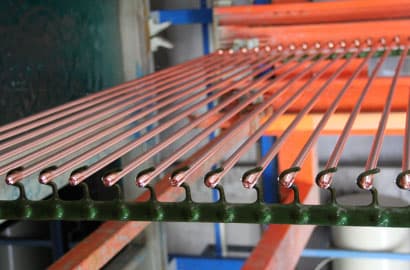Lightning protection grounding system is one of the important measures to protect buildings and equipment from lightning strikes and lightning interference. In the design of a lightning protection and grounding system, the selection of an appropriate
grounding rod is critical to the effective operation of the system. Here are a few key factors to consider when selecting a grounding rod. First, the material of the grounding rod should be considered. Grounding rods should be made of materials with good electrical conductivity, such as copper or copper alloys. Copper has excellent electrical conductivity and corrosion resistance, providing a low resistance to grounding. Copper alloy has good electrical conductivity and high strength for applications where mechanical strength needs to be considered. When selecting grounding rods, the material should be reasonably selected according to the use of the environment and the actual situation. Secondly, the size and shape of the grounding rod should be considered. The size and shape of the grounding rod directly affects the grounding resistance and current conductivity of the grounding system. Usually, the larger the cross-sectional area of the grounding rod, the better the conductivity. When designing the grounding system, it is necessary to calculate the appropriate size of the grounding rod according to the requirements of the equipment, the soil resistivity and the frequency of lightning strikes, etc., to ensure that the grounding effect of the system and the current capacity meet the requirements. In addition, the surface treatment of the grounding rod should be considered. Surface treatment can improve the corrosion resistance of the grounding rod and grounding effect. Commonly used grounding rod surface treatment methods include copper plating, galvanizing, hot dip galvanizing and so on. Through the surface treatment, the contact area between the grounding rod and the soil can be increased, the grounding resistance can be reduced, and the grounding effect can be improved. When choosing the surface treatment method, it is necessary to make a reasonable choice according to the use of environment and material characteristics. Finally, the installation and connection of the grounding rod should also be considered. The connection between the grounding rod and the equipment or lightning protection network must be reliable and stable to ensure the connectivity of the grounding system. When installing the grounding rod, the operation should be standardized to ensure that there is good contact between the grounding rod and the equipment or lightning protection network to avoid excessive contact resistance. In summary, the selection of a suitable grounding rod is a crucial step in the design of lightning protection and grounding system. When selecting grounding rods, it is necessary to consider factors such as material, size and shape, surface treatment, installation and connection methods, and make a reasonable choice according to the actual situation and requirements, in order to ensure the grounding effect and safety of the system.

